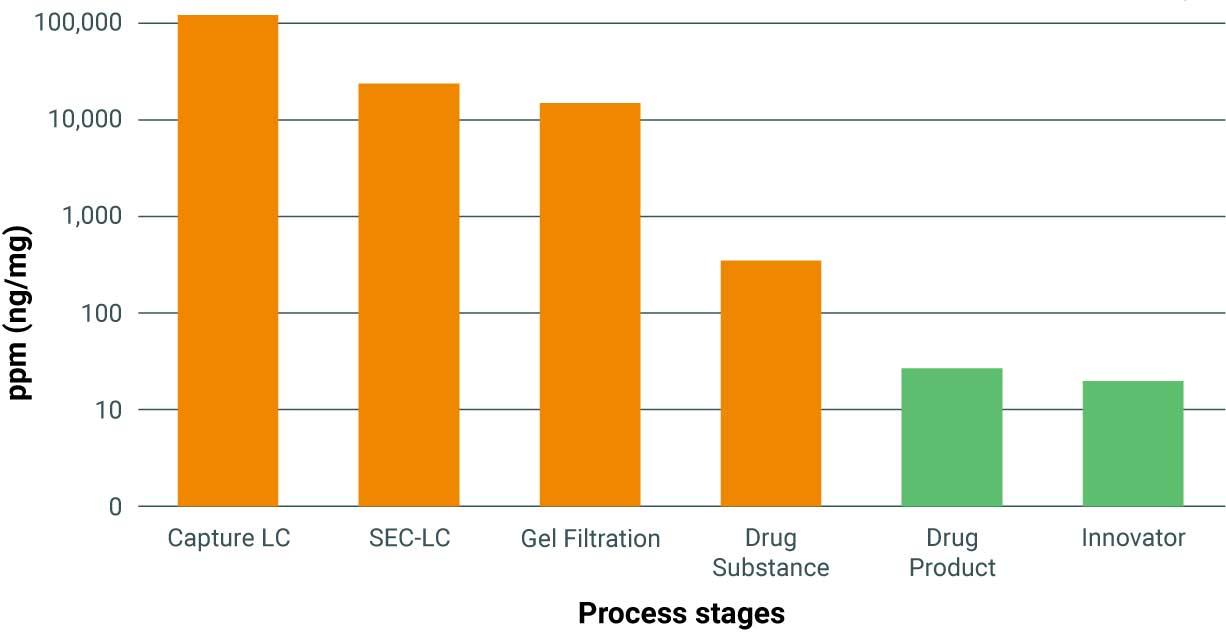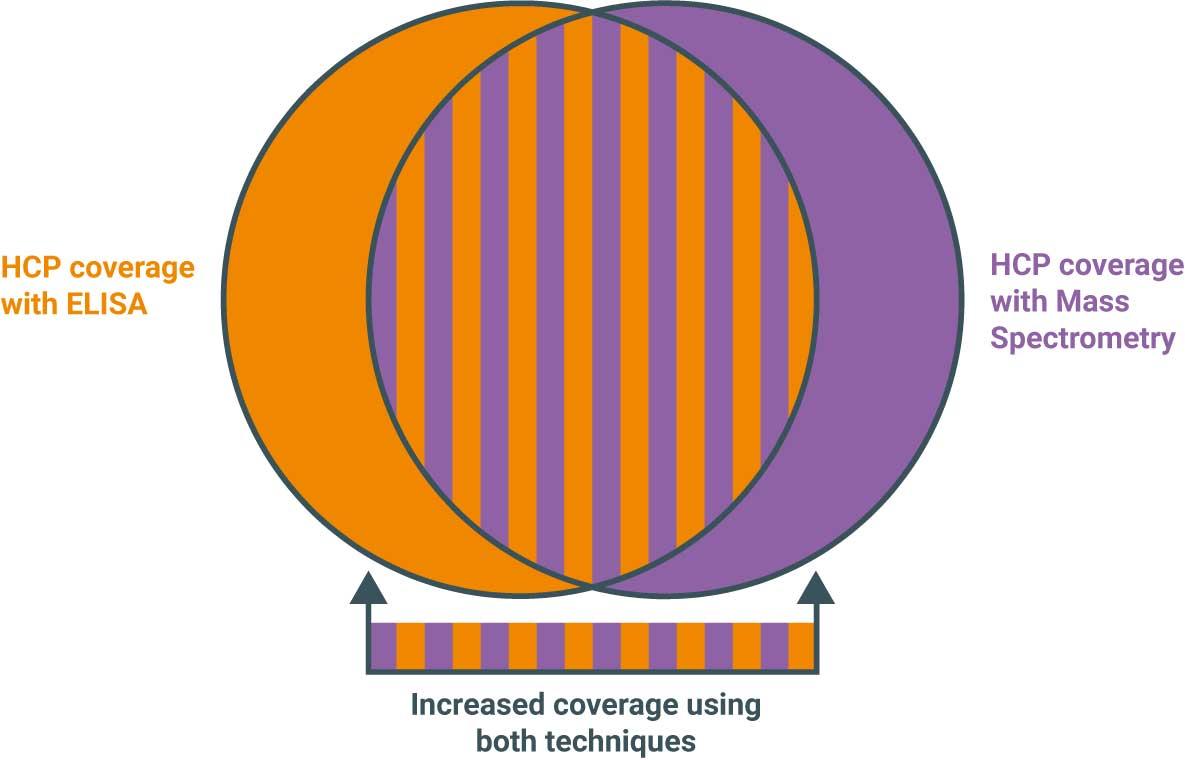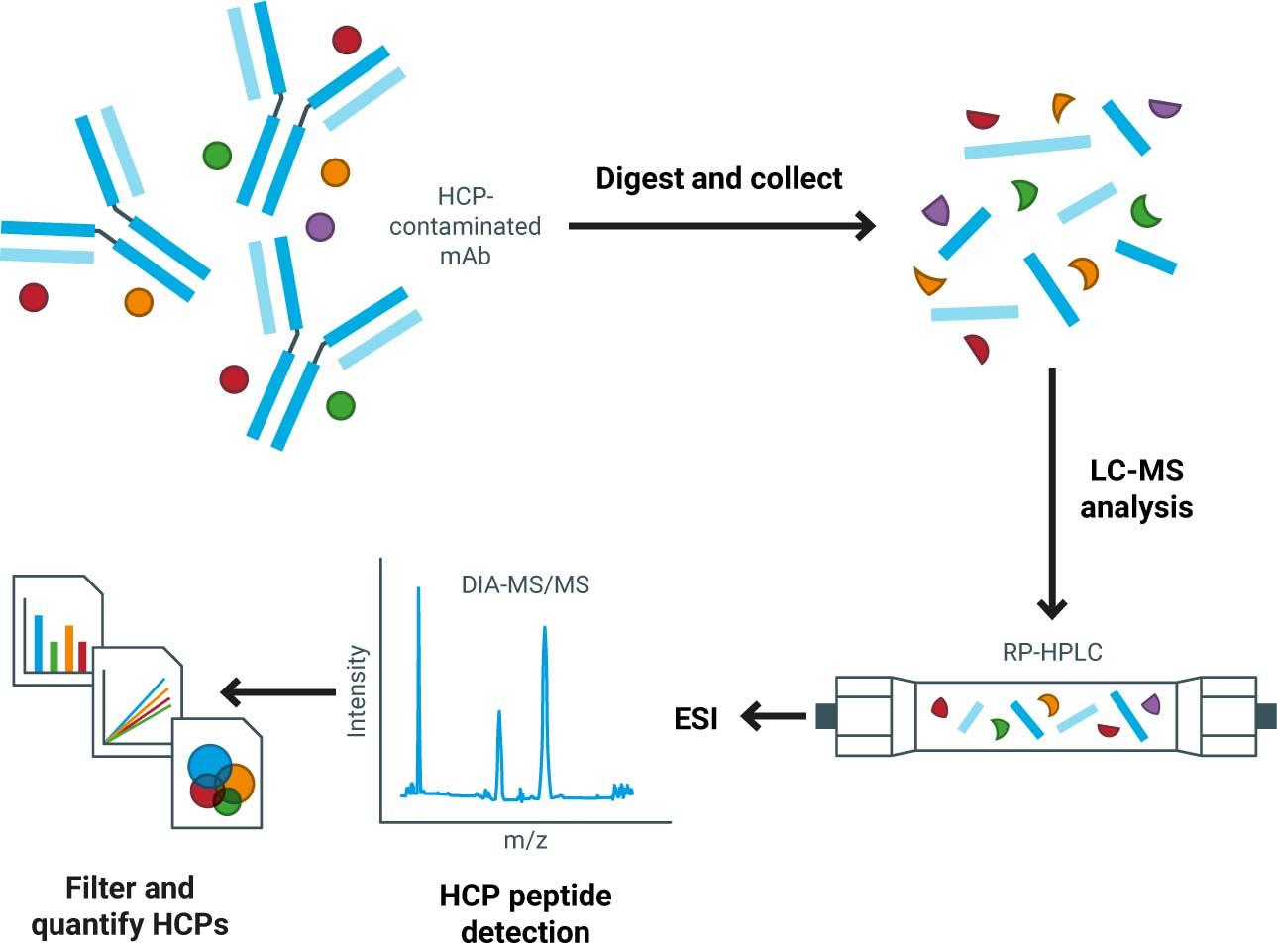Hunting Host Cell Proteins (HCPs) with mass spectrometry
24 Jul 2023
Acquisition
The biotech industry strives to produce high-quality drugs with targeted structure-activity-relationships. The key to delivering these therapeutics is not only in understanding the active pharmaceutical ingredient (API) itself, but also in understanding process-related residual components that are inevitably present in the final product. Identifying and quantifying these components is not just a regulatory requirement – it feeds back to process control mechanisms resulting in improved drug quality.
One area where significant developments have recently taken place is in the analysis of Host Cell Proteins (HCPs). These proteins are derived from the host cell expression system and are targeted for removal through the purification process. HCPs should be assessed from early product development in order to show that the downstream purification processes are effectively reducing and removing HCPs.

Preview
Source: BioPharmaDive
The benefits of including an LC-MS based method
Traditionally ELISA, often in kit form, has been the method of choice for HCP analysis but there is an increased regulatory expectation that ELISAs will be complemented by MS-based HCP investigations. This orthogonal approach has now been supported by a new United States Pharmacopoeia (USP) General Chapter 1132.1 (Residual Host Cell Protein Measurement in Biopharmaceuticals by Mass Spectrometry) which is open for public comment until 31st July 2023. This USP chapter provides an excellent and detailed overview and covers various considerations such as:
different MS and chromatographic systems,
sample prep,
protein databases,
data analysis and,
methods for quantitation.
The principal aim of any HCP assessment is to identify and quantitate proteins down to very low-level abundance and then use this knowledge to determine if and where further purification is required. Mass spectrometric techniques are ideal for this as MS has a wide dynamic range, up to 5 orders of magnitude sensitivity, allowing for the detection of low levels of HCPs among the high concentration of drug products.
As with all methods, there are factors that can limit HCP analysis by MS, including:
suppression of peptides of interest in the complex mixture,
ionization inefficiencies and,
interference from the sample matrix.
Hence, HCP-MS has not been put forward to replace the more common ELISA-based assessments, but to supplement them.

Preview
Source: BioPharmaDive
Dr. Christina Morris, Senior Scientist and HCP-MS expert at BioPharmaSpec said, “Bringing mass spectrometry to HCP detection can generate meaningful data and enhance the understanding of HCP profiles by providing an orthogonal analysis to extend ELISA-derived information. I often present this table to illustrate the advantages and disadvantages of these two complementary techniques.”
Technology
Advantages
Disadvantages
ELISA, Generic
Good reproducibility, sensitivity, high throughput, low cost
No sensitivity for low-reactive, non-immunogenic HCPs
ELISA, Process-specific
Specialized for a specific product to increase breadth of HCP coverage
Long method development and production time for anti-HCP antibodies, higher cost
LC-MS/MS
HCPs identified de novo and quantitated individually, high versatility for any process changes, high sensitivity
Skilled operators for driving instruments and data interpretation. Investment for LC-MS equipment and software
2D SDS-PAGE
Time efficient, low cost, combined with Western blotting can target HCPs of interest
Complex data assessment, not strictly quantitative, low sensitivity
How does MS measure HCPs?
Quantitation of HCPs can be achieved using both labeling and label-free methods like multiple-reaction-monitoring (MRM) or sequential window acquisition of all theoretical mass spectra (SWATH-MS). The SWATH strategy has seen an increase in popularity, benefiting from simple, fast and cost-effective workflows. Through a combination of IDA (Information Dependent Acquisition) and SWATH MS acquisitions of proteolytic digests of product material, HCP identification and quantitation is performed by matching the MS/MS spectra to theoretical masses of equivalent peptide fragments in an HCP-specific sequence database.

Preview
Source: BioPharmaDive
To make sense of the large and highly complex HCP-MS datasets generated from these workflows, Bioinformatics tools are used for peak-picking and filtering of potentially thousands of HCP identifications. The algorithms that sort through these spectra are critical to the HCP-MS strategy in terms of time-efficiency, but a degree of manual assessment (as is recognized in this new USP chapter) is an important cross-check to look for any HCP misassignments or false positives and is especially important in identifying low-abundance peptides.
Should I be considering an HCP-MS orthogonal approach?
With the new HCP-MS General Chapter 1132.1 proposal, the USP clearly recognizes the unique role that MS-based HCP analysis can play in the understanding of product impurity profiles. The ability to identify and quantitate HCPs provides a means to understand the product to a greater extent by generating complementary and orthogonal data to the ELISA-derived information and, through protein identification, accumulate useful information for manufacturing process development and ultimately improved product quality.
BioPharmaSpec’s approach to HCP-MS is flexible and proceeds through clearly defined stages, meaning that you receive data that is useful and applicable at your stage of product development and allows you to meet your specific objectives.
A Collaborative HCP-MS Partner, with Extensive Experience
Whether you want to ensure a robust control strategy, gain better process understanding or compare HCP profiles throughout your process and in the final product, BioPharmaSpec’s experienced scientists will help you implement reliable and repeatable LC-MS based HCP methods for your development project. Speak to a scientist today.
'
For more details,please visit the original website
The content of the article does not represent any opinions of Synapse and its affiliated companies. If there is any copyright infringement or error, please contact us, and we will deal with it within 24 hours.
Organizations
Indications
Targets
Chat with Hiro
Hot reports
Get started for free today!
Accelerate Strategic R&D decision making with Synapse, PatSnap’s AI-powered Connected Innovation Intelligence Platform Built for Life Sciences Professionals.
Start your data trial now!
Synapse data is also accessible to external entities via APIs or data packages. Leverages most recent intelligence information, enabling fullest potential.




